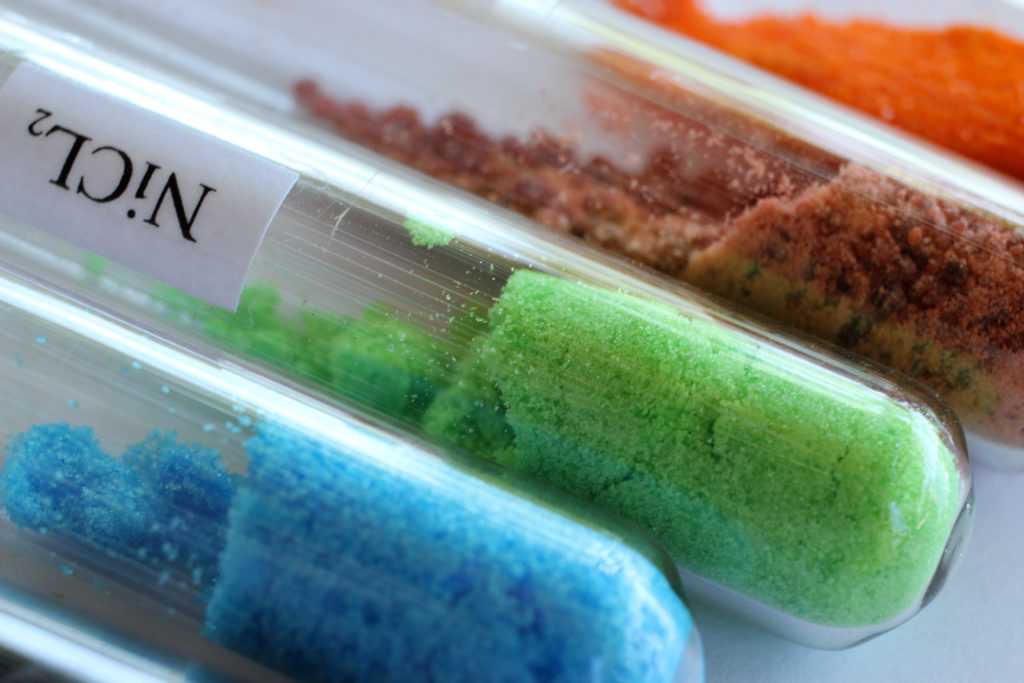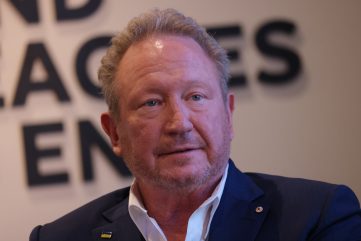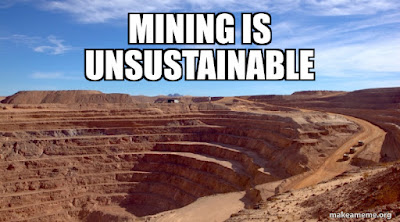GREENWASHING
Reuters | March 6, 2024 |

The London Metal Exchange (LME) does not plan to launch a separate “green” nickel contract because the market is not large enough, but said its partner was developing an index price that will reflect demand for low carbon nickel.

Calls for a nickel price that reflects strong environmental and governance standards have grown from high-cost producers such as Australia, where low prices have forced miners to shutter operations due to a flood of Indonesian supply, most of which is produced using coal.
“Market participants have expressed concern that there remains significant market debate as to how to define ‘green’,” the LME said in a statement.
“Further, that an LME contract representing a narrower sub-segment of the market would not attract sufficient stocks and trading volumes to be viable.”
The LME sees limited appetite for contracts for segments of the nickel market, so-called class 2 materials, such as nickel sulphate, matte and other materials. Its nickel contract, so called class 1 refined nickel, has a purity of 99.8 pct and above.
Last week, Australian mining magnate Andrew Forrest, chairman of Fortescue, said the LME should classify its nickel contracts into “clean” and “dirty” to give customers more choice.
Canada this week joined Australia in calling for robust ESG credentials to be built into global supply chains for critical minerals, Australia’s resources minister, Madeleine King, who is visiting Canada this week, said in a joint statement.
Green specs
While the market is not yet liquid enough to accommodate a green premium, MetalsHub has moved to build an index price that reflects consumer demand for green nickel.
The LME has classified low carbon nickel as that for which a single ton can be produced for 20 tons of carbon dioxide equivalent (C02e) or less, it said. Currently, the carbon footprint for a ton of LME nickel varies from 6 tonnes to more than 100 tons of C02e.
Already, any class 1 nickel on the Metalshub platform, which counts Outokumpu and Aperam among its users, can be listed with specific ESG credentials, including its carbon footprint, which allows buyers to filter for carbon intensity.
“This functionality is in place today and there is no need to split the LME contract to assess a ‘green’ premium,” Metalshub managing director Frank Jackel told Reuters.
From this month, Metalshub will start reporting monthly data that includes trades of low carbon carbon nickel, the LME said.
As traded volumes increase, it plans to publish a low carbon index price that could eventually grow to become a “green” nickel premium index reflecting additional sustainability metrics, the LME said.
“CO2 footprint and ESG performance will play an important role and it gives producers the opportunity to market their products with a premium if the market is willing to pay it,” Jackel said via email, adding that Metalshub was keen to work with Australian miners.
(By Eric Onstad and Melanie Burton; Editing by Clarence Fernandez)
Global producers call for LME to introduce green premium for cleaner nickel
Calls for a differentiation between higher and lower-quality nickel come as Indonesian dominance continues to drive a price crisis in the industry.
Annabel Cossins-Smith
The LME is likely to approve the request as part of its recovery plan for the nickel market, which is also still reeling from a price crash in 2022.
Last month, BHP chief executive Mike Henry said on an earnings call with reporters that it would “seem sensible” to see a price premium for sustainably sourced nickel. A spokesperson for the miner has said that “an increasingly well-known range of ESG [environmental, social and governance] and responsible sourcing challenges currently exist” in Indonesia.
The Australian market in particular has suffered. Several major miners have suspended or pulled out of nickel operations as a direct result of the drawn-out price slump and subsequent poor profits. Last month, BHP announced plans to shut down its nickel operations in Western Australia citing a lack of hope that prices will recover sufficiently in the short and medium term.
In January, miner First Quantum announced that it will cut production at its Australian nickel mine and slash its workforce amid poor profits. Mining giant Glencore also announced last month that it will sell its entire stake in the Koniambo Nickel SAS joint venture in New Caledonia, which has never turned a profit despite funding interventions from the French Government.
Global miners are now worried that Indonesia’s low-cost nickel supply will wipe out rivals within the next few years and could eventually account for more than three-quarters of the world’s high-quality nickel, if listing on the LME is to go ahead.
The LME told the Financial Times it supports the industry on “several sustainability measures to ensure transparency throughout the supply chain”. It added that low-carbon nickel is listed on its Metalshub platform and “the transaction data supports identification of a credible ‘green premium’ to the LME price”.
Calls for a differentiation between higher and lower-quality nickel come as Indonesian dominance continues to drive a price crisis in the industry.
Annabel Cossins-Smith
March 7, 2024


Andrew Forrest has been pushing the London Metal Exchange (LME) to formally distinguish between poor-quality nickel and cleaner supplies.
Credit: Sean Gallup/Getty Images.
Mining companies have called for a green price premium to be introduced for sustainably produced nickel traded on the LME as the global sector scrambles for recovery.
Australian mining major BHP and metals magnate Andrew Forrest, the Australian billionaire that owns miner Wyloo Metals, have been pushing the LME to formally distinguish between poor-quality nickel and cleaner supplies.
“We have got to differentiate between dirty nickel and green nickel. The LME must differentiate between dirty and clean. They are two different products, they have two vastly different impacts,” Forrest told reporters at a briefing in Australia.
The move comes as the sector tries to combat an ongoing price crisis arising from an abundance of low-quality, cheap supplies from Indonesia. However, now miners in the country are looking to list their metal as high quality.
On Tuesday, Chinese-Indonesian nickel producer PT CNGR Ding Xing New Energy applied to have its metal supply listed as a ‘good delivery brand’ on the LME for the first time in history, sparking discomfort among western producers.
Mining companies have called for a green price premium to be introduced for sustainably produced nickel traded on the LME as the global sector scrambles for recovery.
Australian mining major BHP and metals magnate Andrew Forrest, the Australian billionaire that owns miner Wyloo Metals, have been pushing the LME to formally distinguish between poor-quality nickel and cleaner supplies.
“We have got to differentiate between dirty nickel and green nickel. The LME must differentiate between dirty and clean. They are two different products, they have two vastly different impacts,” Forrest told reporters at a briefing in Australia.
The move comes as the sector tries to combat an ongoing price crisis arising from an abundance of low-quality, cheap supplies from Indonesia. However, now miners in the country are looking to list their metal as high quality.
On Tuesday, Chinese-Indonesian nickel producer PT CNGR Ding Xing New Energy applied to have its metal supply listed as a ‘good delivery brand’ on the LME for the first time in history, sparking discomfort among western producers.
The LME is likely to approve the request as part of its recovery plan for the nickel market, which is also still reeling from a price crash in 2022.
Last month, BHP chief executive Mike Henry said on an earnings call with reporters that it would “seem sensible” to see a price premium for sustainably sourced nickel. A spokesperson for the miner has said that “an increasingly well-known range of ESG [environmental, social and governance] and responsible sourcing challenges currently exist” in Indonesia.
The Australian market in particular has suffered. Several major miners have suspended or pulled out of nickel operations as a direct result of the drawn-out price slump and subsequent poor profits. Last month, BHP announced plans to shut down its nickel operations in Western Australia citing a lack of hope that prices will recover sufficiently in the short and medium term.
In January, miner First Quantum announced that it will cut production at its Australian nickel mine and slash its workforce amid poor profits. Mining giant Glencore also announced last month that it will sell its entire stake in the Koniambo Nickel SAS joint venture in New Caledonia, which has never turned a profit despite funding interventions from the French Government.
Global miners are now worried that Indonesia’s low-cost nickel supply will wipe out rivals within the next few years and could eventually account for more than three-quarters of the world’s high-quality nickel, if listing on the LME is to go ahead.
The LME told the Financial Times it supports the industry on “several sustainability measures to ensure transparency throughout the supply chain”. It added that low-carbon nickel is listed on its Metalshub platform and “the transaction data supports identification of a credible ‘green premium’ to the LME price”.

No comments:
Post a Comment